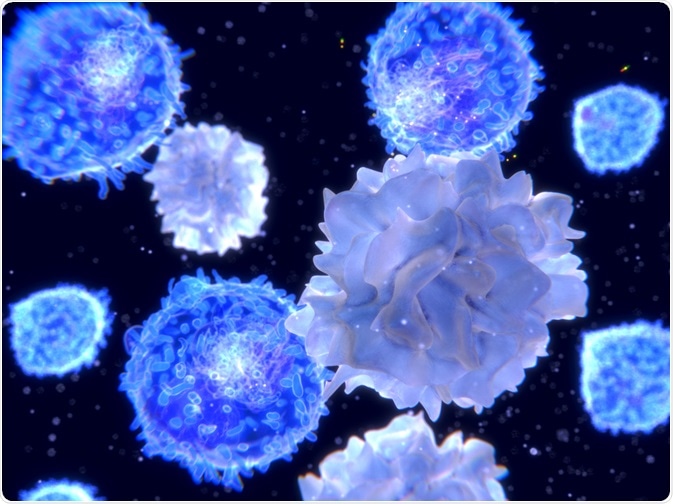The cGAS–STING pathway is part of the innate immune system and is involved in the detection of cytosolic deoxyribonucleic acid (DNA). Post-detection, this pathway triggers the defense mechanisms that can lead to cell senescence.
Skip to:
 Juan Gaertner | Shutterstock
Juan Gaertner | Shutterstock
Steps in the cGAS–STING pathway
The innate system consists of molecules that can respond to danger signals. These molecules include pathogen-associated molecular patterns (PAMPs) and damage associated molecular patterns (DAMPs) which bind to their receptors with the ability to recognize their pattern and initiate an immune response.
These receptors can be membrane bound, like Toll-like receptors (TLPs) that can detect pathogens on the surfaces of cells or cytosolic pattern recognition receptors, like retinoic acid-inducible gene I-like receptors (RLRs), and cyclic GMP-AMP synthase (cGAS) that detect pathogens inside cells. After the ligand binds to these receptors, they activate the downstream pathway which induces inflammatory responses even further.
One of the methods that the organisms have evolved to detect foreign DNA is the cGAS-STING pathway. The cGAS-STING pathway goes as follows:
- Two cGAS molecules bind to two double-stranded DNA molecules, forming a cGAS2-DNA2 complex,
- The cGAS molecule undergoes a conformational change, converting ATP and GTP to 2’3’-cyclic GMP-AMP (cGAMP)
- cGAMP then binds to an endoplasmic resident protein known as STING,
- STING undergoes a conformational change, exposing its C-terminus
- This allows the binding of TBK1 which subsequently phosphorylates IR3 leading to the production of type 1 interferon (IFN-1),
- IFN-1 exerts its antiproliferative and immunomodulatory activities, prohibiting infection.
cGAS MECHANISM ANIMATION
Physiological roles of the cGAS-STING pathway
cGAS is a pattern recognition receptor that can sense any pathogen DNA present in the cytoplasm. It can detect double-stranded DNA of varying sequences and species. Thus, detection by this system may be avoided by two means: compartmentalization of the DNA using nuclear or mitochondrial membranes and by preventing the accumulation of DNA in the cytoplasm.
In some cases, the pathway may be activated even in the absence of pathogen DNA. This can be in instances when the nuclear DNA leaks into the cytoplasm and is detected as foreign DNA molecule. This situation can then lead to autoimmune diseases.
Which pathogens does the cGAS–STING pathway protect against?
The pathway can detect DNA viruses, retroviruses and/or intracellular bacteria, and is used for inducing the proinflammatory cytokines. In the case of mice which do not posses this pathway, there is a larger pathogen burden and death.
cGAS–STING pathway regulation
It is very important that the overactivation of the cGAS-STING pathway is prevented to maintain immune homeostasis. Enzymes such as RNase H2, TREX1, and DNase II regulate this pathway by regulating the basal level of DNA present in the cytoplasm.
It has been observed that mice that do not have these regulatory enzymes develop autoimmune diseases and die at a young age. Activation of this pathway by self-DNA can also lead to sterile inflammation. Studies also show that myocardial inflammation, age-related macular degeneration, and liver fibrosis is also carried out partly by this pathway.
Senescence and oncogenesis
Stress and damage in any cell can induce senescence, or cell cycle arrest. The causes that are known to cause senescence to include oncogenic activity, laminopathy, oncogene activities, DNA damage, attrition of telomeres, etc. All of these stimuli can directly or indirectly cause DNA damage leading to micronuclei formation, the formation of cytoplasmic chromatin fragments, and senescence-associated secretory phenotype (SASP).
Recent studies show that cGAS-STING pathway can detect micronuclei and chromatin fragments, and is involved in causing SASP. It was not shown that lack of cGAS promoted tumorigenesis; however, ongoing studies are investigating of cGAS deficiency can promote tumorigenesis in case of oncogene or oncogene-models.
Further Reading
Last Updated: May 13, 2019